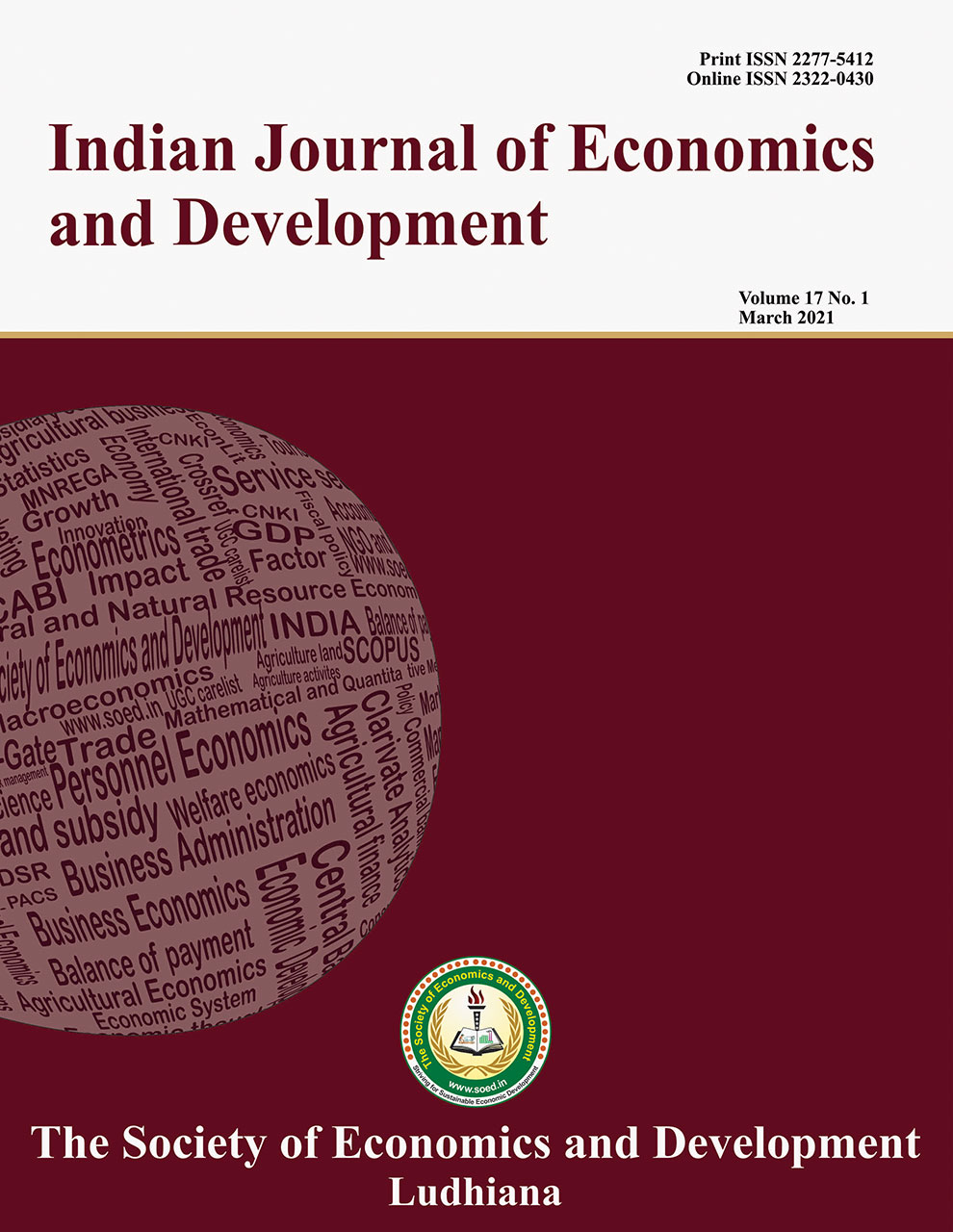Constraints in Adoption of Protected Vegetable Cultivation in Mid-hill Areas of Himachal Pradesh

Price: ₹ 1000
Author: Kanika Mehta, Rajesh Kumar Thakur and J.S. Guleria
Author Address: Department of Agricultural Economics, Extension Education & Rural Sociology CSK Himachal Pradesh Krishi Vishvavidyalya, Palampur-176062 (Himachal Pradesh)
Keywords: Capital investment, constraints, income generation, protected technology.
JEL Codes: C82, Q12, Q15.
Abstract
The transfer of protected cultivation technology to the farmers in Himachal Pradesh started in 2003-04. Considering the huge financial investments and incentives provided by the government, the technology is still at a very nascent stage. Therefore, the present study was conducted to delineate the capital investment pattern, income generation and the constraints faced by farmers in the adoption of protected technology. The study is based on primary data collected through a survey method for the agricultural year 2015-16. The data were collected from 60 protected vegetable growers, selected using two-stage random sampling from the Kangra district of Himachal Pradesh. It was observed very high capital investment (`229438) requirement out of which the owner’s contribution was to the extent of 27.56 percent and the remaining amount was contributed by the government. The protected cultivation was observed to increase the farmers’ income by nearly 25 percent. The constraints were observed to exist with respect to various aspects viz., structural/ construction, infrastructural, operational, institutional and marketing. The lack of knowledge about the site, orientation, material, etc., lack of technical know-how and training, inadequate extension and advisory services, lack of credit, insurance and storage facilities, etc., were reported to be the major constraints in the adoption of technology. There is a dire need for the development of effective storage and marketing infrastructure, the supply of quality planting inputs at affordable prices; effective pricing policies, frequent and effective training to the farmers as well as an efficient integration of this technology by the farmers on their farms. This will not only help in enhancing profitability and sustainability but will also expand the adoption of technology in the state
Description
Indian Journal of Economics and Development
Volume 16 No. SS, 2020, 372-377
DOI: https://doi.org/10.35716/ijed/NS20-067
Indexed in Clarivate Analytics (ESCI) of WoS
Kanika Mehta, Rajesh Kumar Thakur and J.S. Guleria
Department of Agricultural Economics, Extension Education & Rural Sociology
CSK Himachal Pradesh Krishi Vishvavidyalya, Palampur-176062 (Himachal Pradesh)
Corresponding author’s email: kanika.mehta9315@gmail.com



